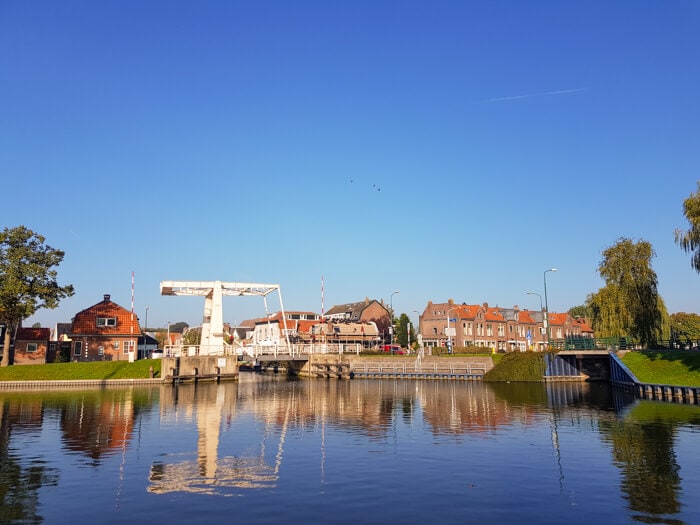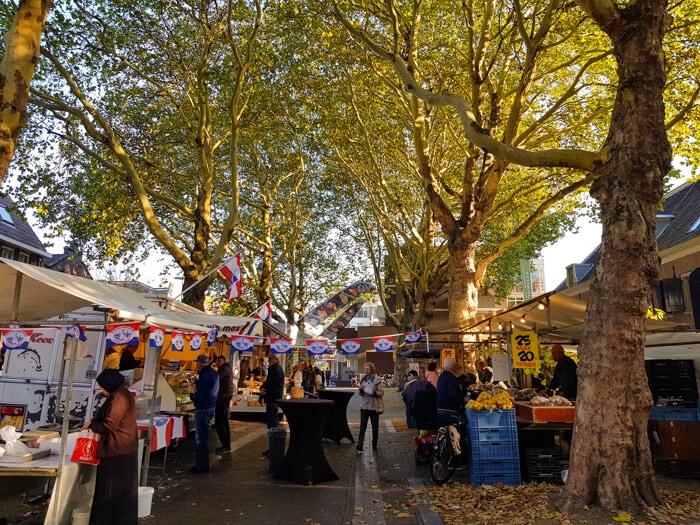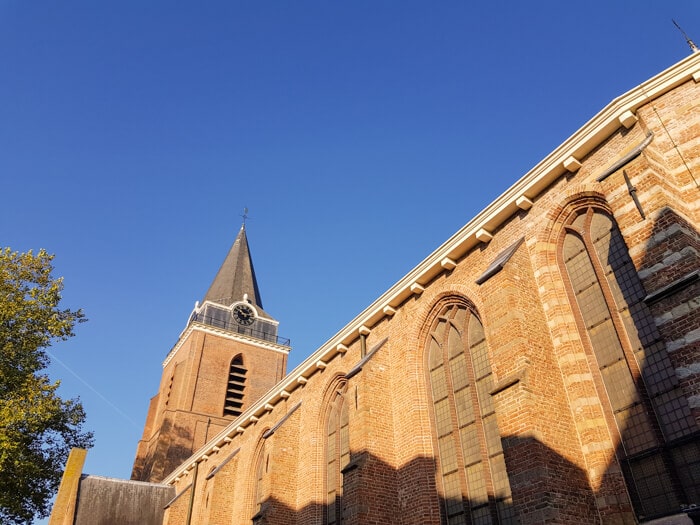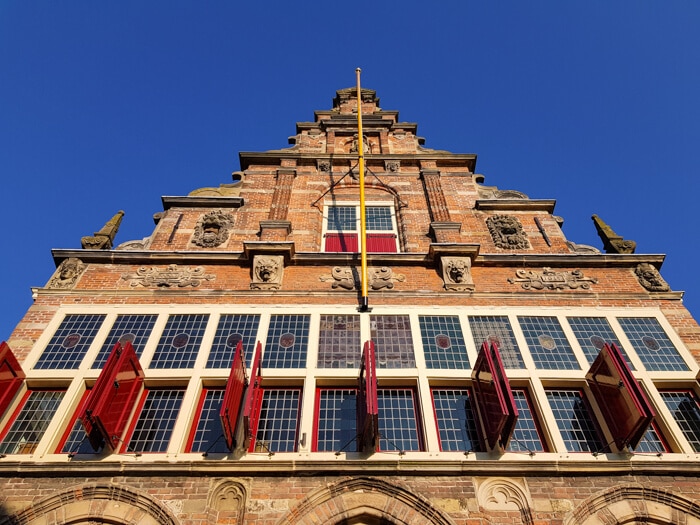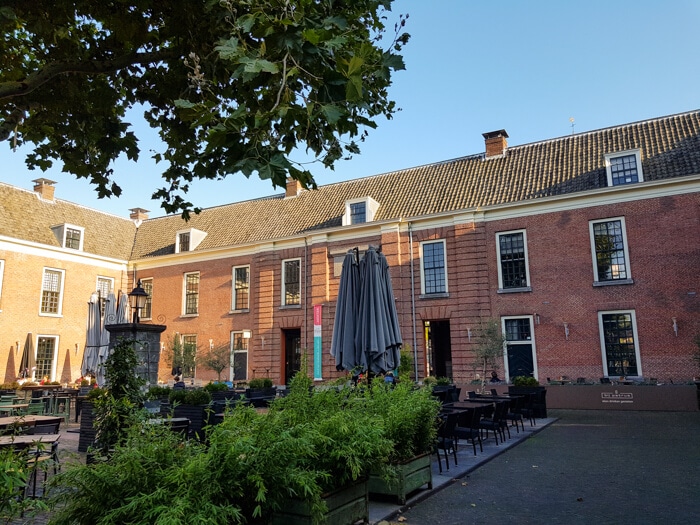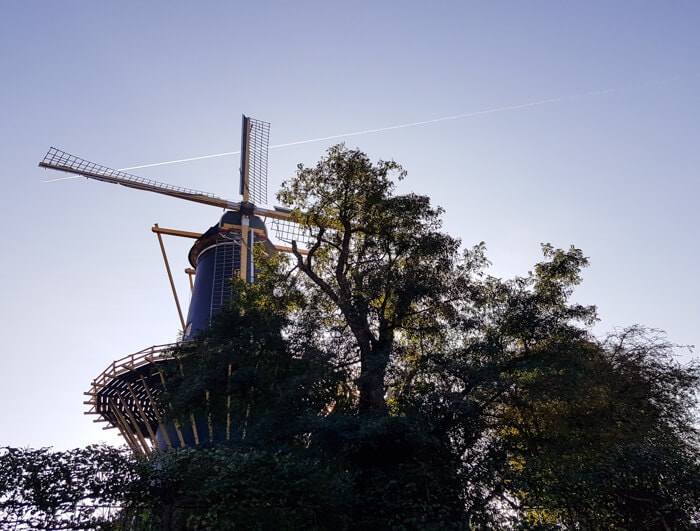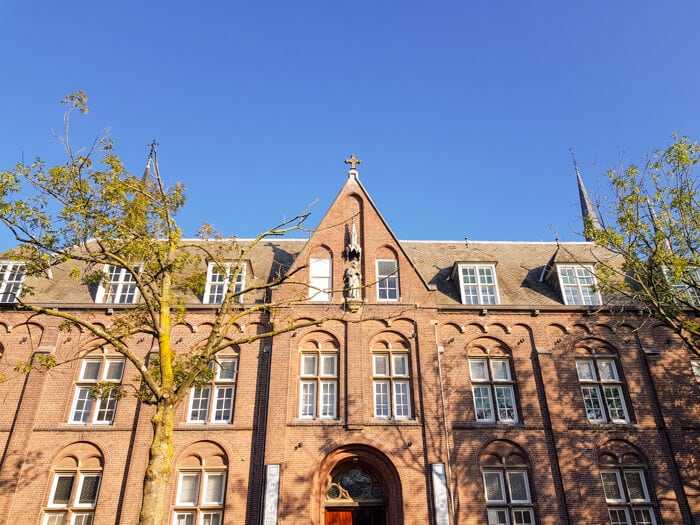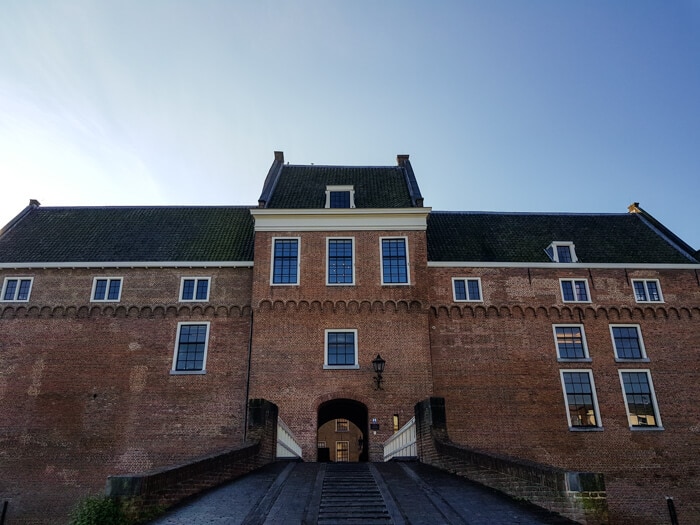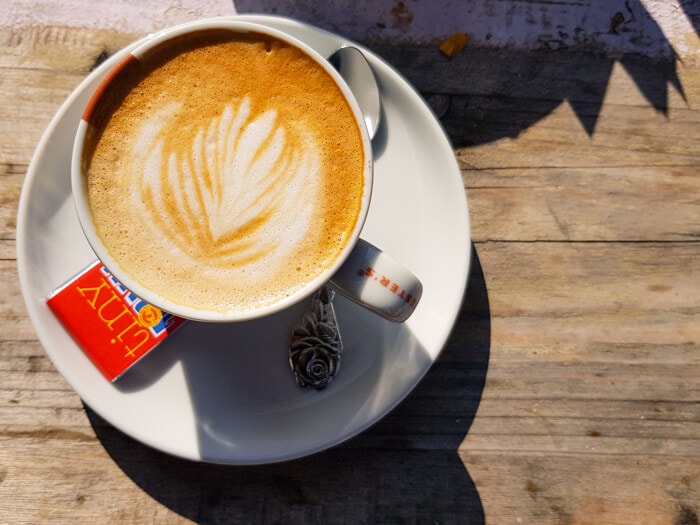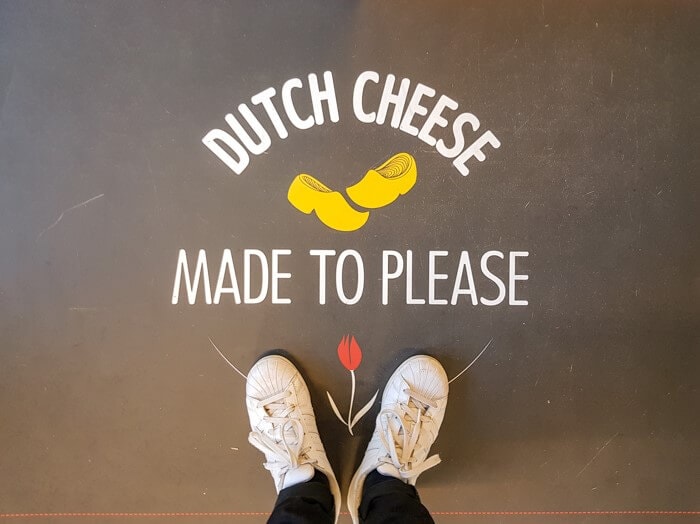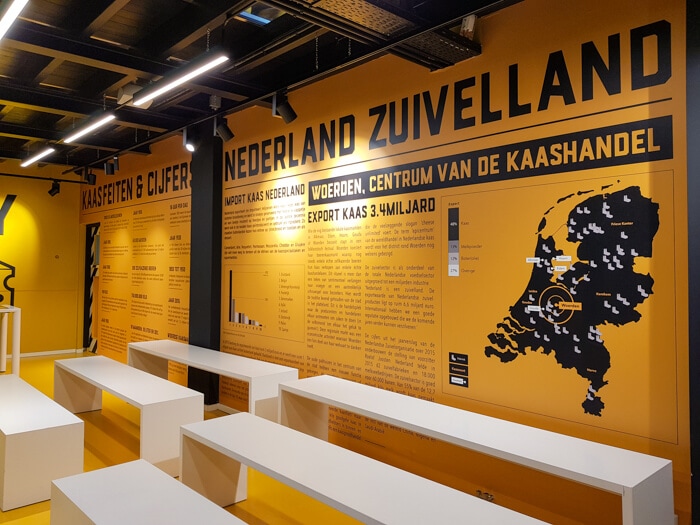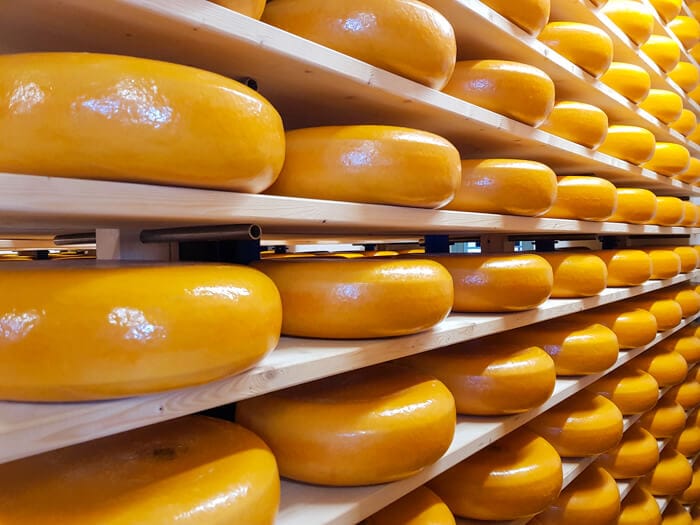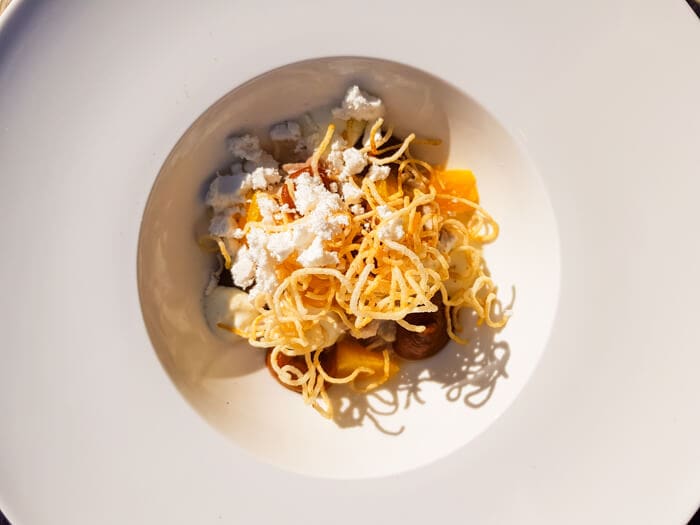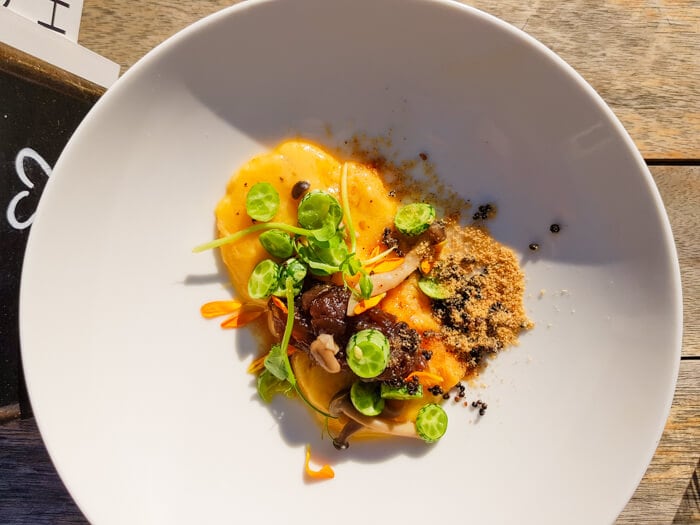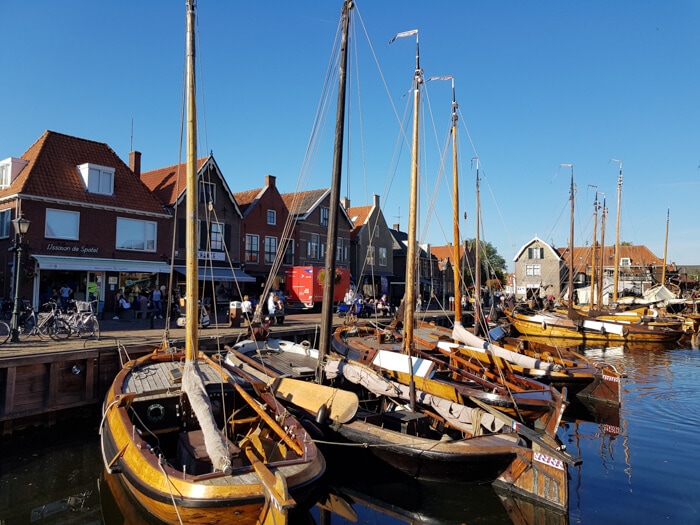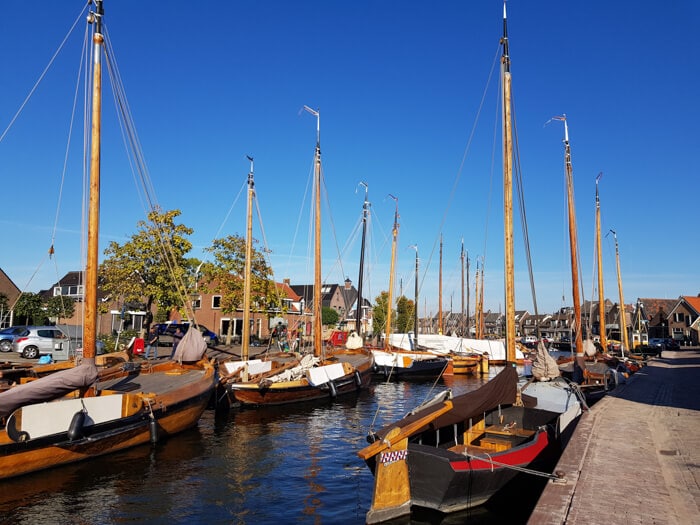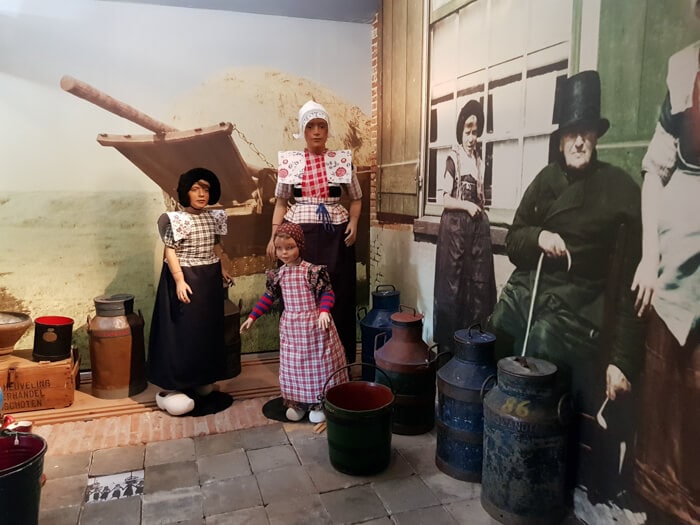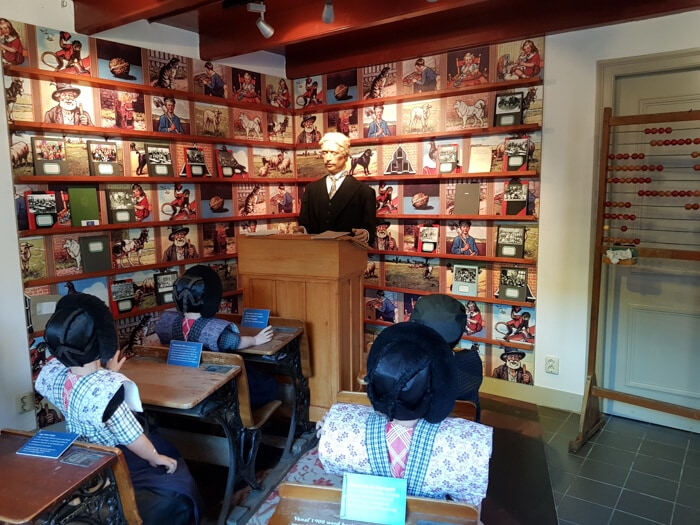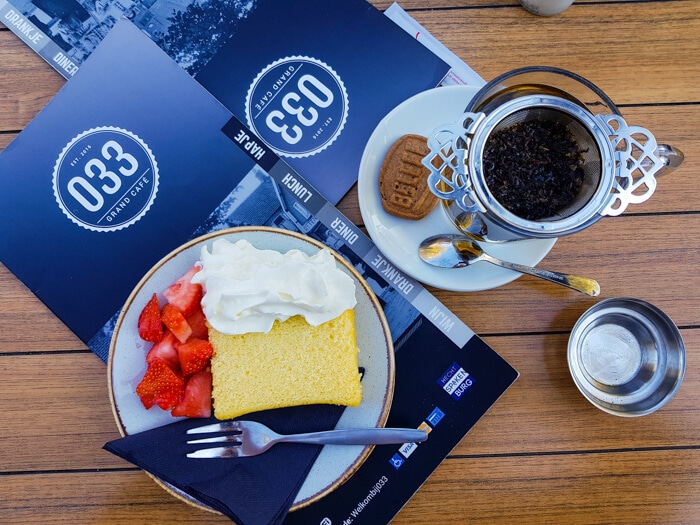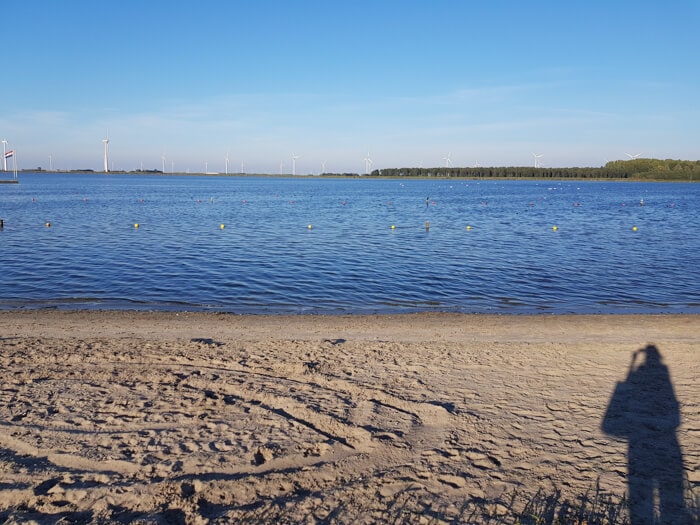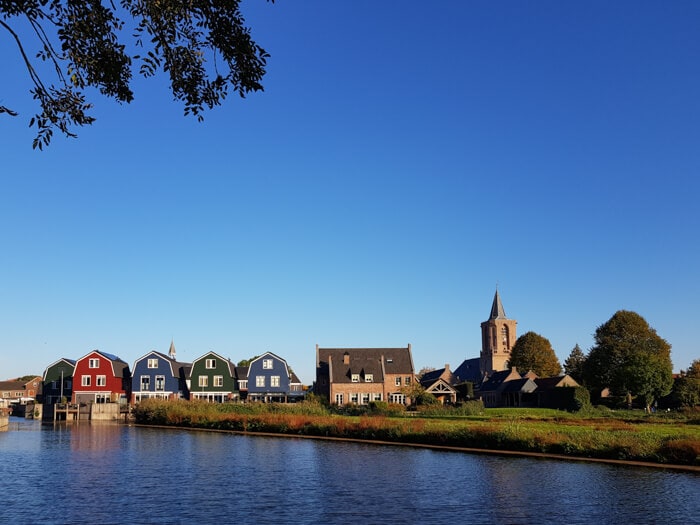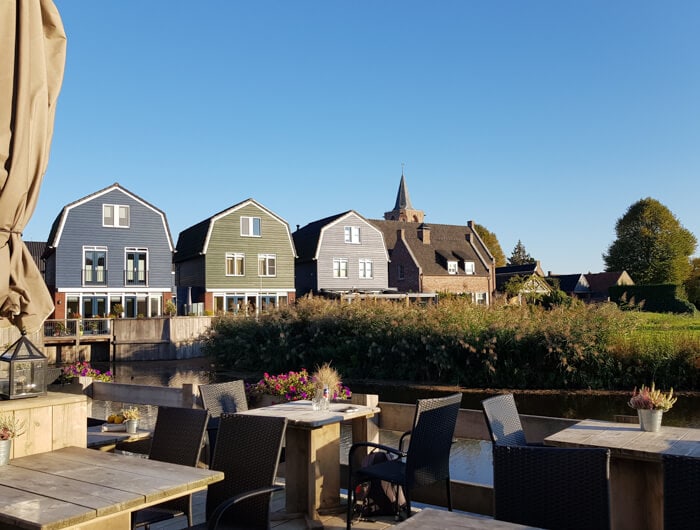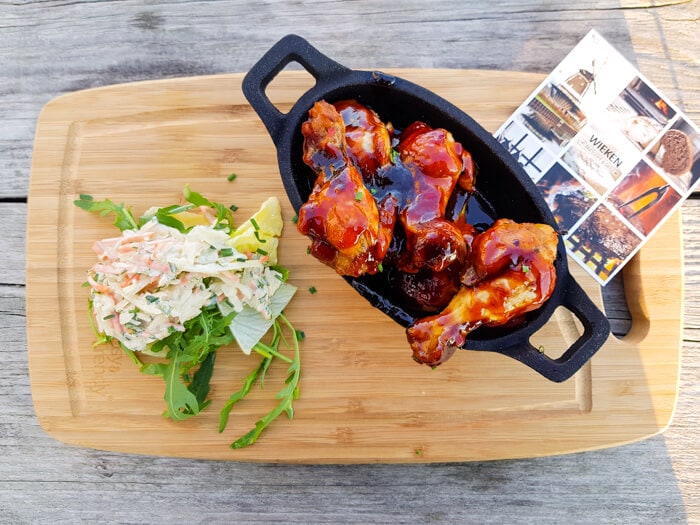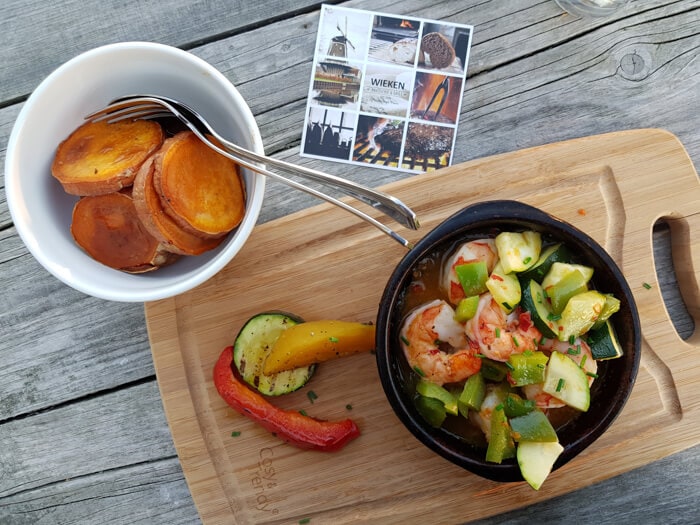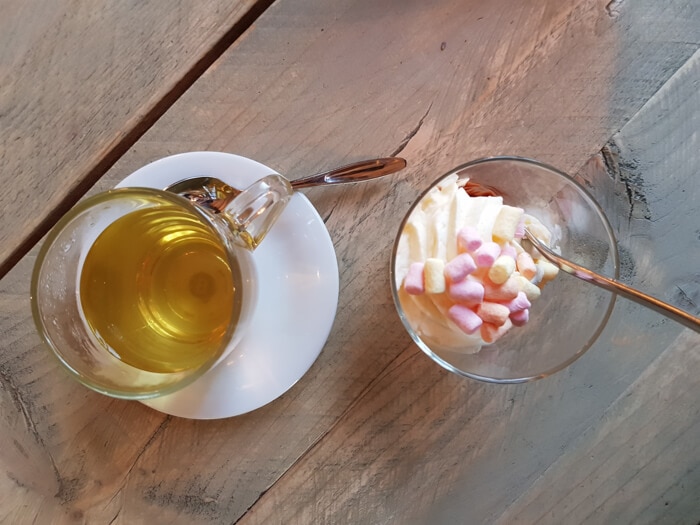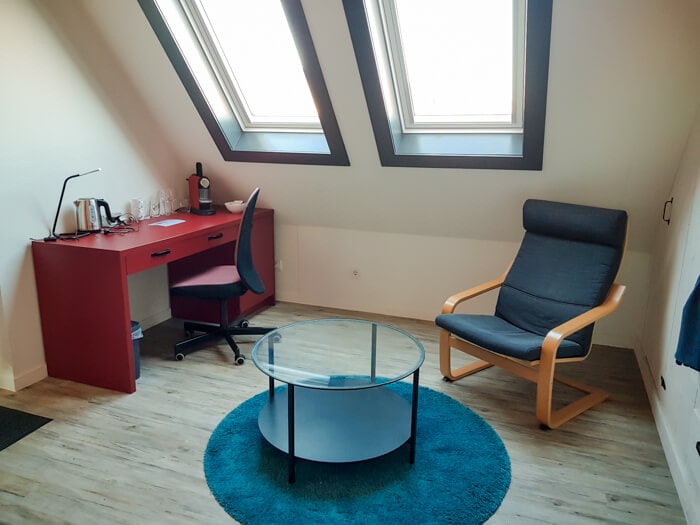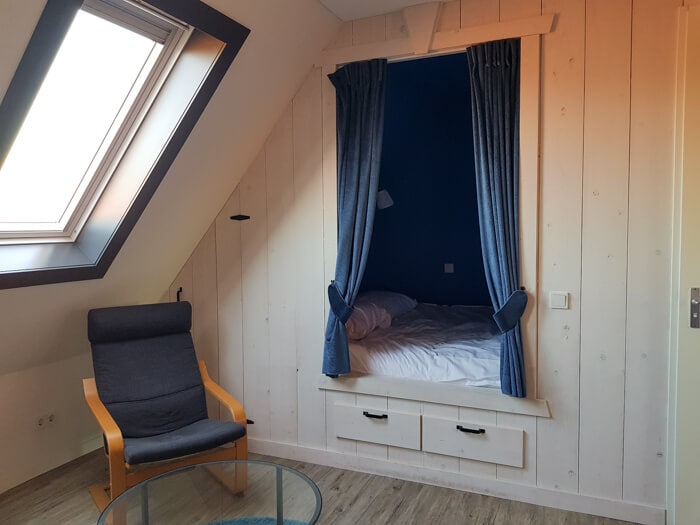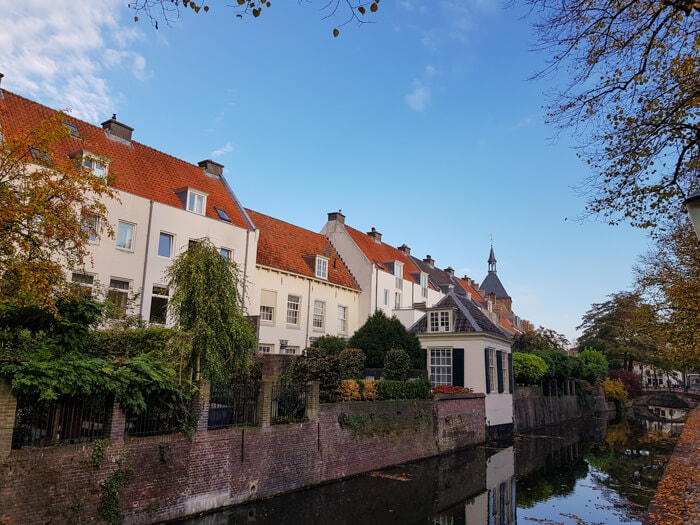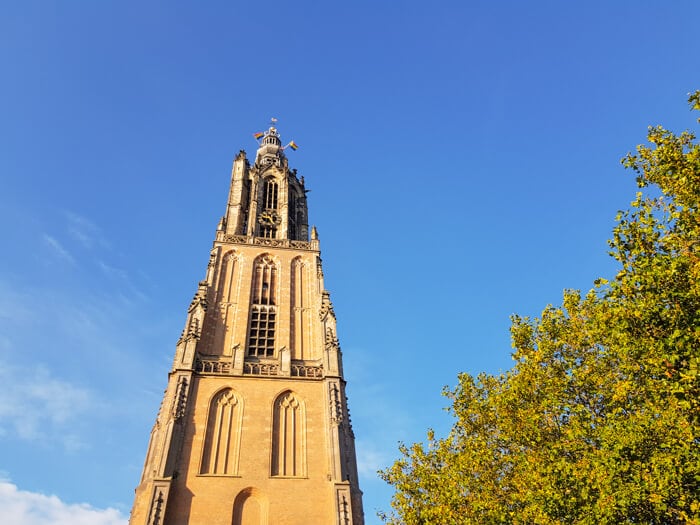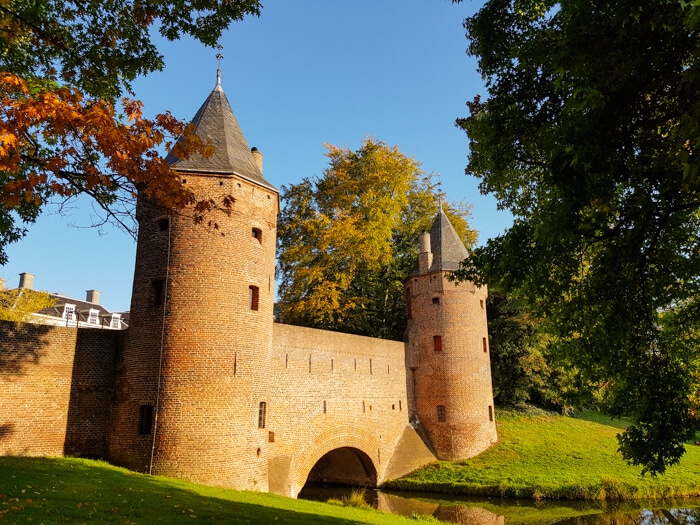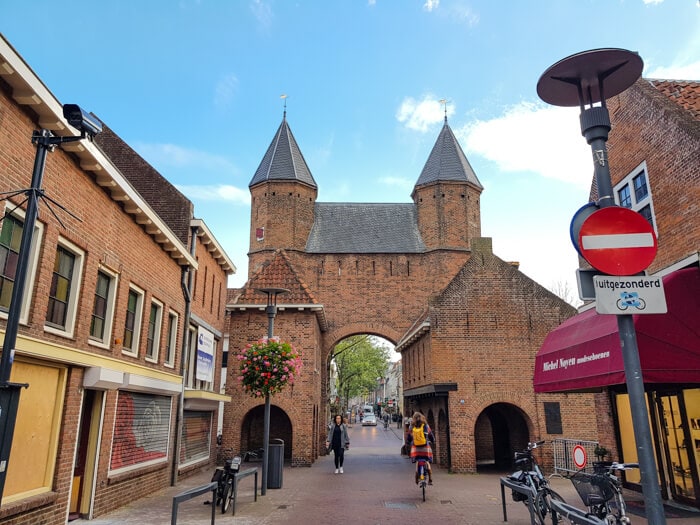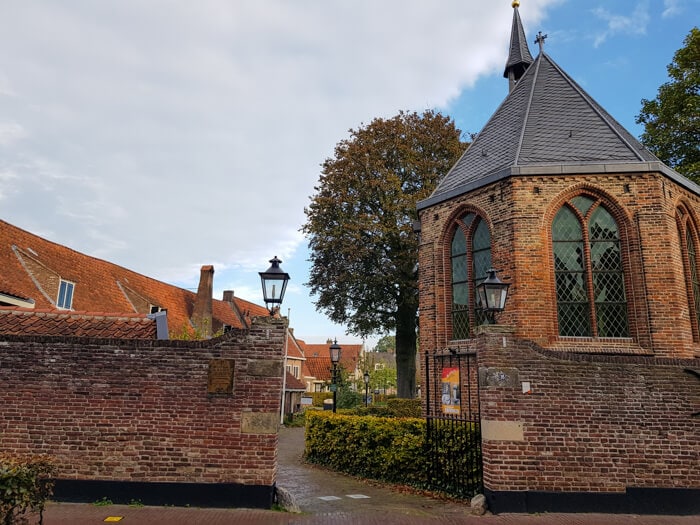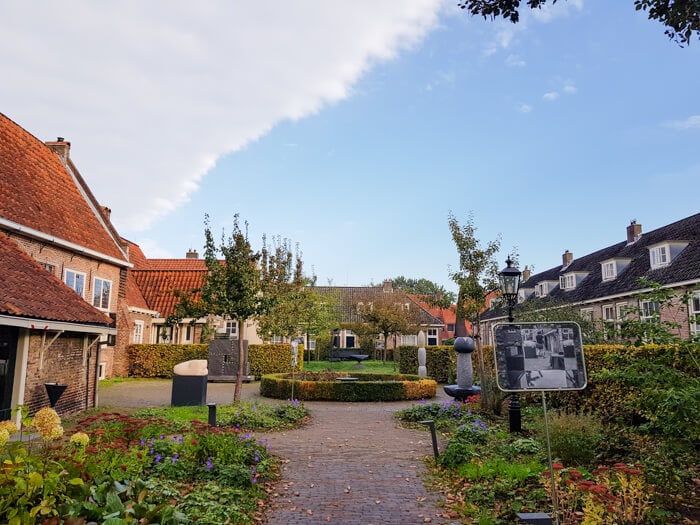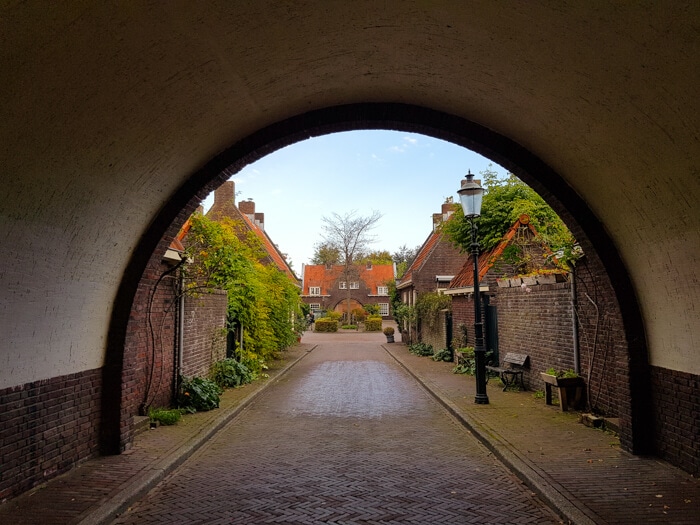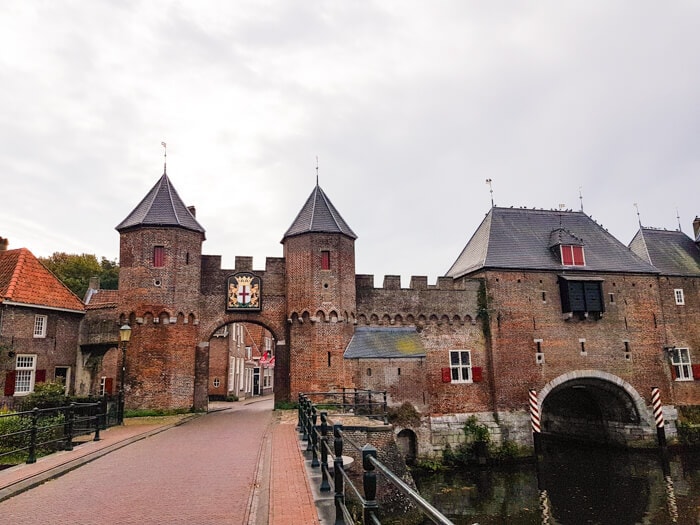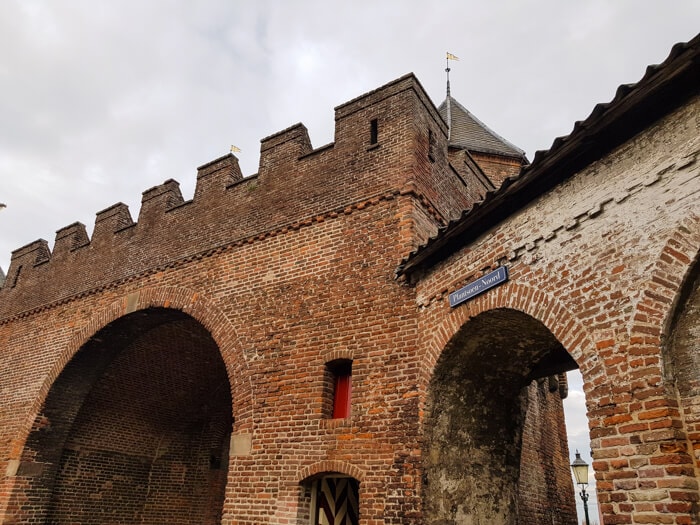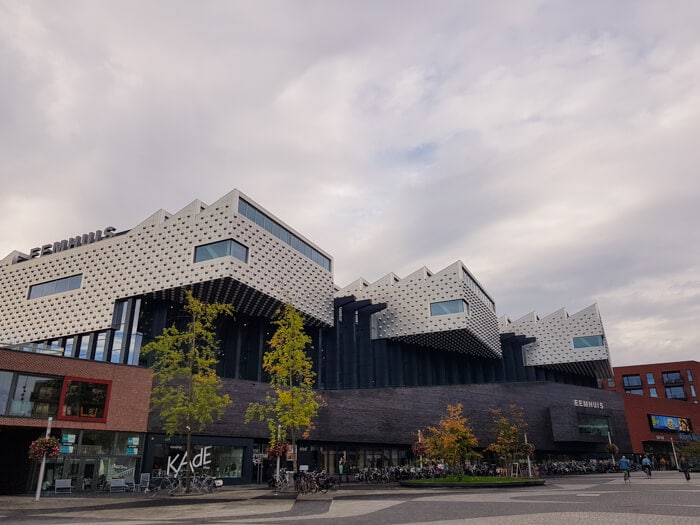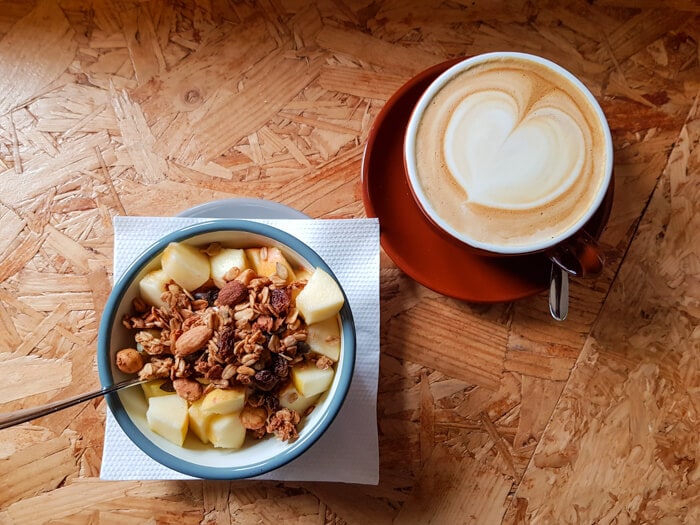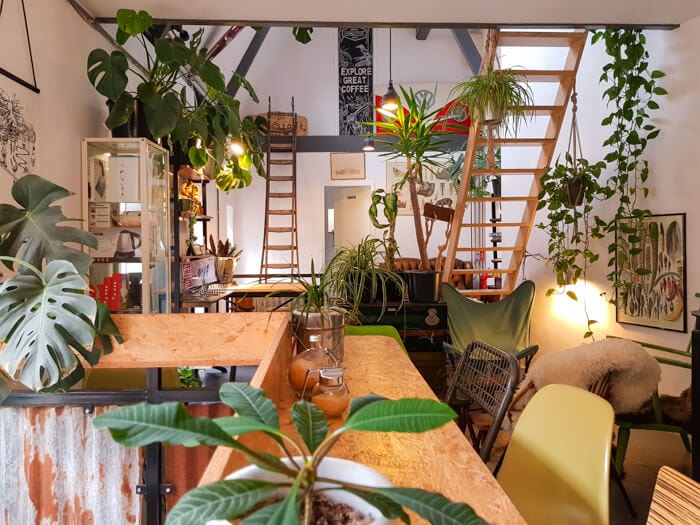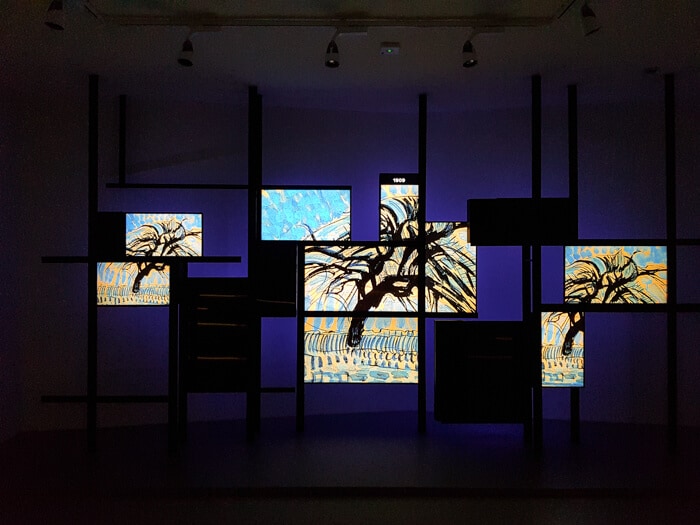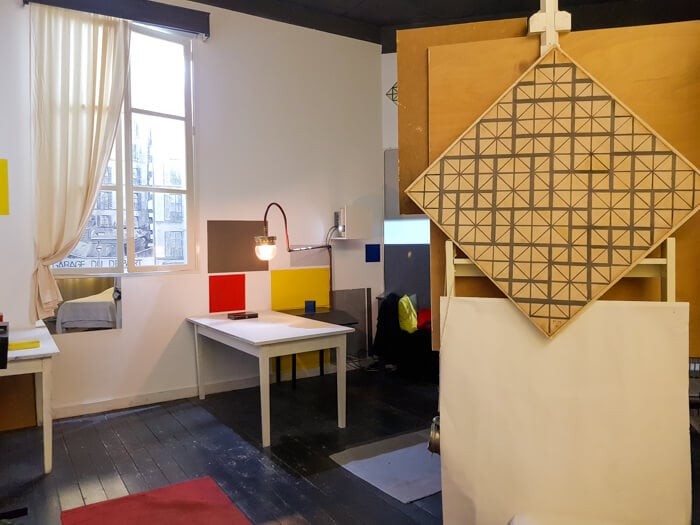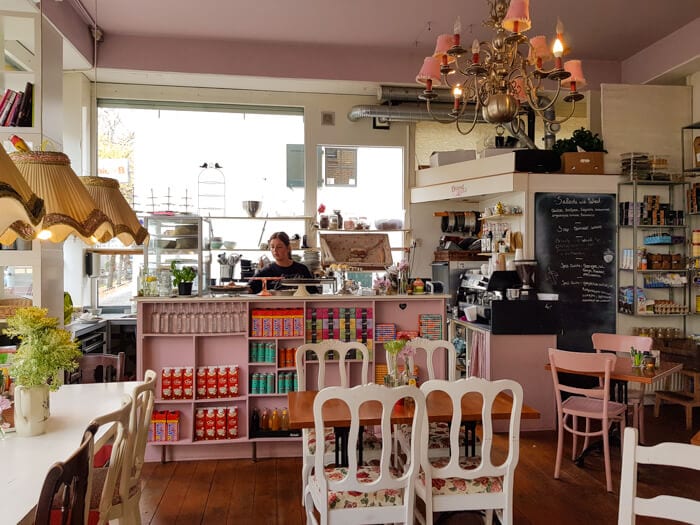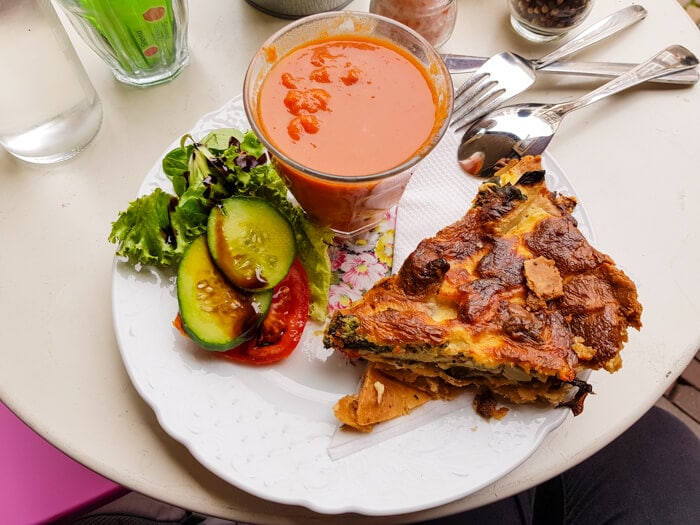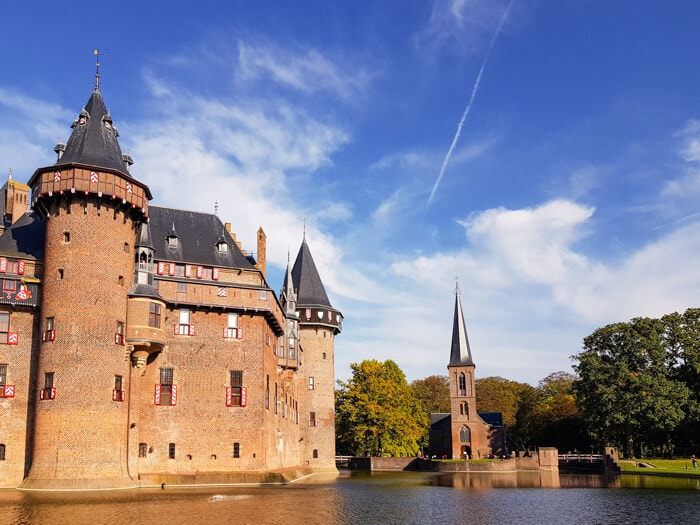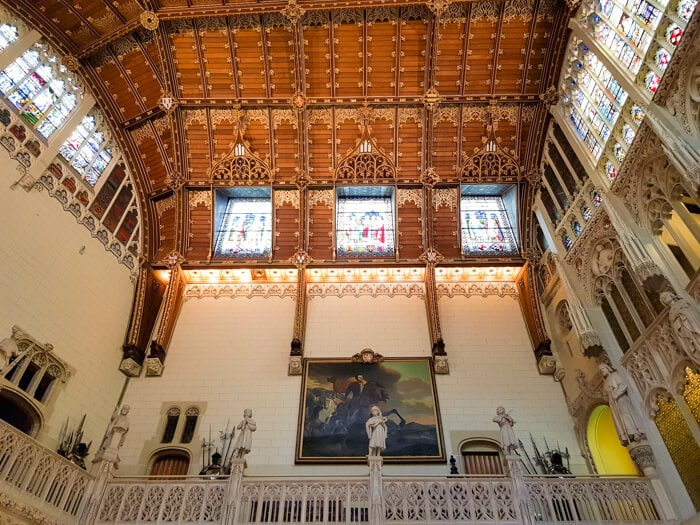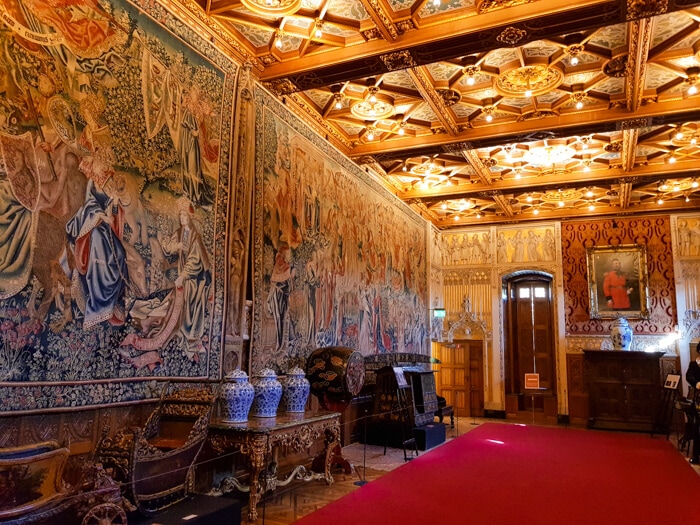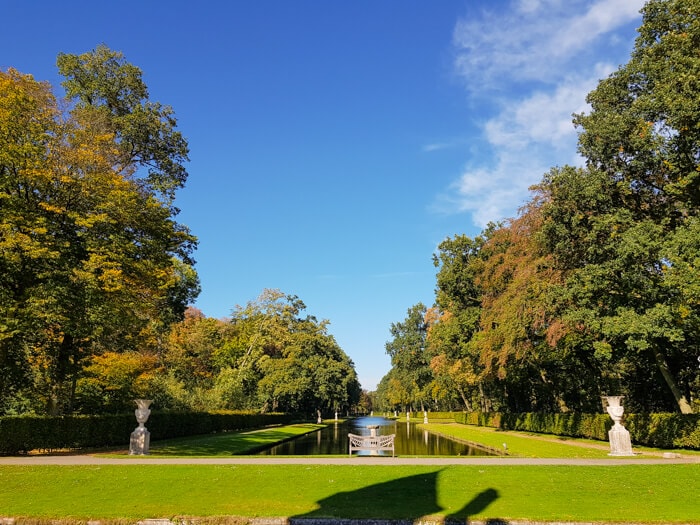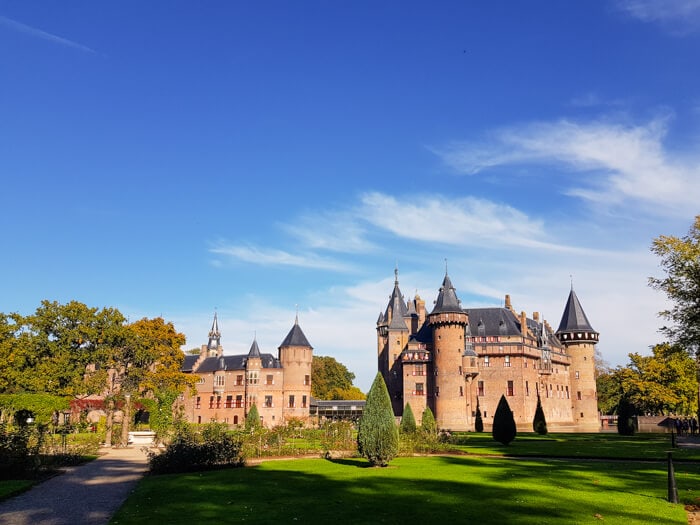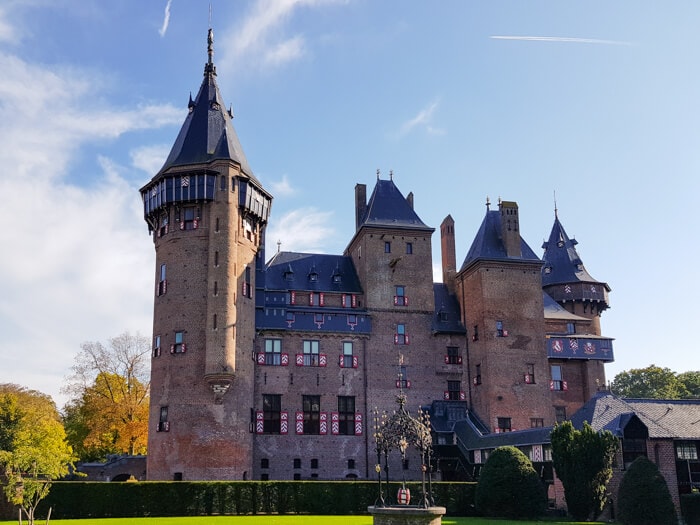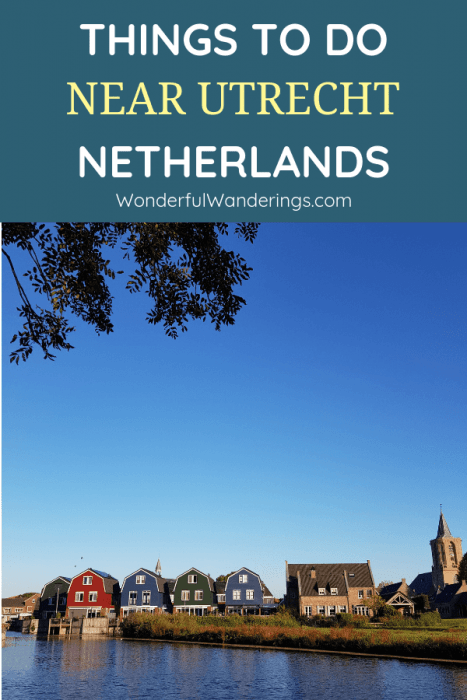I always love visiting the Netherlands. They’re right next door and while so familiar, still feel “abroad”. So when Visit Utrecht Region invited me to come visit some places I hadn’t been to yet, I happily said yes.
Below, you can find a range of things to do in Utrecht province. You can do these as day trips from Utrecht, as stand-alone getaways or, like I did, as a midweek or weekend away.
Contents
Things to do in Utrecht province
1. Visit Woerden
Walk the heritage route
I love exploring cities by just wandering around but if you want to make sure you don’t miss any of the highlights, it’s always good to do a bit of research beforehand. Woerden has a photography heritage route which takes you along a bunch of historical sights.
I started the route at the church Square (“Kerkplein”) where you’ll find the City Hotel Woerden in a building dating back to the 18th century. This used to be where military equipment was stored. If you’re in need of a coffee, that’s a perfect excuse to wander in and admire the interior.
Nearby stands the Cheese Bell. It dates back to 1925 when it was placed to celebrate the 100th anniversary of the Woerden cheese market. It’s not just a monument, though. People would write on it how much cheese had been sold and what the price was.
Also on the Church Square lies – surprise! – the church, and more specifically the Petrus Tower. You can climb the 203 steps to the top for a view of the city but only on a guided tour which takes place every second and fourth Saturday of the month.
And then there’s the city museum. I didn’t go in but did admire the façade with its striking red window shutters.
From there it was on to the Gildepoortje, a small gateway that’s supposed to be located at Havenstraat 1a but I somehow completely missed it. With many more stops on the route, I decided to just head on to the next one which was the former casern.
The building dates back to 1790 and now houses different eateries. The square in front of the casern is one big terrace when the weather’s nice and the ideal place to have a bite and relax.
From the former casern, its just a minute’s walk to Mill De Windhond (“The Greyhound”). It dates back to 1755, was restored in 1984 and is still in use today.
You can visit the mill for free and buy some of the mill’s products on Fridays when it’s working and on Saturday between 10.30 a.m. and 4 p.m. It’s also possible to visit the mill with a guide on Wednesday afternoon between 2 and 4 p.m.
On the same road as the mill, lies a former convent which is now a center for the arts and a music school. It has the only theater in the Netherlands that’s built in the garden of a former convent.
Where there’s a convent, there’s a church and the St. Bonaventura church is quite impressive. Make sure to cross the street to get a proper view of it.
Don’t head back into the center just yet, but first cross the street to have a look at the entrance gate of the Woerden Castle. The Castle is now an event location for weddings, conferences, business meetings, workshops, and all kinds of other get-togethers.
From the castle, it’s easy to head onto the Rijnstraat which is one of Woerden’s shopping streets and also where you’ll find OOK.
Stop for coffee at OOK
OOK is a cook and gift shop/coffee bar that stretches from the Rijnstraat tot the Voorstraat. The entrance at the Voorstraat takes you into the store, while the one in the Rijnstraat leads into the coffee bar which, by the way, also has a cool terrace made with wooden palettes.
I enjoyed a soft cappuccino on the terrace and regret not having tried one of their cakes. They looked really good but I had a lunch appointment right after.
You could totally get cake, though, if you do something else before going to lunch, like have a cheese experience!
Have a Cheese Experience
Woerden is one of the most important places in the Utrecht region when it comes to cheese production and cheese markets. Every Saturday morning, you can visit the farmer’s cheese market at the church square and in summer, they do historical reenactments of how the cheese trade used to happen at the market.
But you can learn about Woerden cheese all-year-long at the Kaaspakhuis (“cheese depot”). A guide tells you all about the cheese making process today and you’ll get an actual look into a modern cheese factory through virtual reality glasses.
Read the information signs before you try to take the cheese quiz or learn some more by choosing the themes that interest you from an interactive board.
But what’s most fun is putting on a white coat and hat and heading upstairs, where the cheeses are stored to ripe. You probably won’t guess, but there’s 60 tons of cheese in this small hall!
Ask if you can hold one to see how heavy it is and watch how an expert turns the cheese – part of the ripening process. Now that you have an idea of the weight of a big cheese, step onto the cheese scale downstairs. It’ll tell you how many cheeses heavy you are. I was between three and four cheeses :D
And if you’re looking for a cheesy (see what I did there) group activity, consider booking a “Build your own cheese” workshop.
Top tip:
On Friday, cheese is being made right at the museum and if you visit then, you get to see the cheesemaker do his thing.
Go for lunch at Bistronoom
Bistronoom is a trendy restaurant and bar across from the former casern, with a big terrace on its square. Here you can choose between quick local bites and refined gastronomy, all prepared with regional products and even produce from Bistronoom’s own garden.
They also have an elaborate drinks menu which made me divert from my usual sparkling water or tea to try a deliciously refreshing ginger based mocktail.
Aside from the food being excellent, I need to mention the friendly service and attention to detail. Just an example: every table had a little “welcome note” saying something funny like “Hey gorgeous” or “Lucky you, this is your table”.
How to get to Woerden
I drove to Woerden from my home in Belgium and parked at the paid underground parking lot Parking Castellum. You can also take the train.
Click here for train timetables and prices within Europe.
If you’re flying into the Netherlands, check Skyscanner for an overview of flight options.
2. Visit Spakenburg
Walk along the Museum Harbor and the new harbor
Spakenburg has a Museum Harbor that’s actually an active harbor with historical boats. It dates back to the 13th century and was once built for the fishermen.
When I got there, I thought the boats were just there to look at, but then some people headed out in one! It was a bit surreal, this very old-looking wooden boat leaving the harbor with modern-dressed people on it.
The boats here are called “botters” and Spakenburg has the largest collection of botters in the world! Also, a third of all botters in the Netherlands is docked in Spakenburg.
If you walk to the right of the water, along Oude Haven (“Old Harbor”) and then turn the corner to your left, you’ll reach the new part of that harbor where you’ll find modern pleasure boats. It’s also possible to rent a boat in Spakenburg – for just a few hours up to a week or longer.
This you can do at Jachthaven Nieuwboer, where you can also rent bikes. That’s what I did later that day to make my way to dinner.
In summer, you can even go for a sail on one of the old boats! You should check sailing.spakenburg.nl for the dates and times for 2019 as they’d just ended operating when I was there. The boat tours, lasting 1.5 hours, run from May until September included.
Visit Museum Spakenburg
Right by the Museum Harbor (and the tourist information office, by the way), lies the Museum Spakenburg. Here you step back in time to learn about how the people of Spakenburg used to live, dress and work.
All the items on display at this museum are authentic, either coming from private collections or donated by people. The museum itself is housed in original historical buildings as well.
The exposition is set up depicting scenes out of ordinary life in Spakenburg as it used to be. There are areas dedicated to schooling, farming, fishing, cooking, clothing, and more. My favorite thing was the collection of tea sets, of course :-)
You enter and leave the museum through the cafe which is worth a look around on its own because of its vintage look. They also serve local cake here.
Oh, and what’s also nice to know is that there are plenty of volunteers working for the museum and they’re happy to give you a tour if you just ask for one. No need to call ahead, unless you’re coming with a large group.
Have a drink at Grand Cafe 033
The Spuiplein is the central square in Spakenburg and Grand Cafe 033 has a big terrace overlooking it. I’m so happy I chose this place to have a cup of tea and local cake (simply called “Spakenburg cake”) because they served a perfect cup of Earl Grey.
Loose tea in a removable filter with a little holder on the side and, of course, a cookie. Simple things like this can make me so happy!
The local cake was a moist cake and I had mine with whipped cream and strawberries. Just writing this makes my mouth water again!
Check out the small beach
Before, I told you to walk along the right side of the old harbor to get to the new harbor, but you can also keep to the left of it to get to the Eemmeer, a lake. Turn left once you reach the lake to walk alongside it and at the end, right before the path turns back toward the center, you’ll see a small beach. It’s lovingly called “The little sea”.
The green open space surrounding the path is also a nice place to come and have a picnic or read a book.
Watch the sunset over dinner at Wieken Bistro
Bistro Wieken is located a 5-minute bike ride or a 15-minute walk outside of Spakenburg’s center, right by mill “The Hope” in the neighboring town of Bunschoten. This mill is a replica of the original mill that dated back to 1899 but was torn down in 1967.
It still runs on Wednesdays and Saturdays when there’s enough wind and has a small shop that sells different kinds of flour.
But I didn’t go there for the mill, I came to have dinner at Wieken.
With a terrace overlooking the water and a protected piece of land, this is the perfect spot to have dinner while watching the sunset. Everything on the menu looked so good that I – very unlike me – ordered a full three-course meal.
First up were the grilled chicken wings in homemade bbq sauce.
Then came my shrimp with vegetables and a side of sweet potatoes.
And because I was full but couldn’t resist, I had a children’s ice cream which was perfect: a big scoop of vanilla ice cream with whipped cream and marshmallows. Marshmallows! How genius is that!
No need to say I went back to my hotel feeling wonderfully content.
Stay at Hotel De Mandemaaker
When I visited Spakenburg, I spent the night at Hotel De Mandemaaker which offers studios in an apartment building right off the main square. Check-in happens at Restaurant De Mandemaaker across the square, after which you’re taken to your room which doesn’t just include a bathroom, wardrobe, bed, seating area and desk, but also some kitchen appliances so you can prepare your own breakfast here if you want to.
That’s not necessary though, as it’s also possible to have a breakfast prepared by the restaurant.
Thanks to its central location, Hotel De Mandemaaker made for a great place to stay.
How to get to Spakenburg
I drove to Spakenburg from Woerden and parked at the free parking lot of sports center Westmaat at Westdijk.
If you’d rather take the train, you’ll need to take it to Amersfoort Central Station and then switch to bus 76 (Syntus) which takes you directly into the city center of Spakenburg.
Click here for train timetables and prices within Europe.
If you’re flying into the Netherlands, check Skyscanner for an overview of flight options.
3. Visit Amersfoort
I only had a morning to visit Amersfoort and that truly wasn’t enough. Luckily, I’d mapped out a route with the highlights beforehand which you can do in a morning, but I highly recommend you spend at least a day here to be able to also just wander around a little and do some shopping.
Wander around the city center: the highlights
Amersfoort is rich in historic houses, cute coffee bars, and fun stores but for my route, I focused on some of the major sights-to-see.
As it was close to where I parked, I started at the Church of Our Lady from where I walked through the pretty Breestraat toward the water. You can actually follow the water all the way around Amersfoort’s historical center, but I only did so until I reached the Monnikendam, which used to have a water leveling function.
From there, it was onward to Muurhuizen. It’s a quaint street that now forms a half circle around the city center within the waterline. You’ll find some lovely houses here which were built with the bricks that became available when the original city wall was torn down in the 15th century.
It was torn down because a new wall was built in a bigger radius around the city.
From Muurhuizen, I walked to the Kamperbinnenpoort, a city gate that used to be part of the original city wall. It dates back to the second half of the 13th century but was largely demolished in the 16th century and then even more in the 19th century.
The city of Amersfoort actually wanted to take the gate down but the Dutch government stepped in and made funds available for its restoration instead.
I walked through the Kamperbinnenpoort to exit the inner ring of Amersfoort and headed to the De Armen de Poth courtyard. This little courtyard was first developed at the beginning of the 16th century when the Brotherhood of the Holy Ghost moved there.
One of the things they’d done since their foundation in the 15th century, was feed the poor. The food they gave them was called “poth” and the name of the courtyard now is this translated as “The poor the food”.
Later, the main building was occupied by nuns who took care of plague sufferers who lived in the houses in the courtyard. Vacant houses were opened to homeless people and since then and around the end of the 19th – beginning of the 20th century, houses were added to create what would come to look like the current courtyard.
Still today the courtyard is “managed” by regents of the College of Regents, a new name the Brotherhood took on in the 18th century. And until 1975, free bread was still handed out weekly here. In 2018, the old bread oven was restored.
From there, it was onward to the Dreyershofje, again a cute little courtyard surrounded by houses. The houses here were originally meant for artists who didn’t make much. It was super calm here and I couldn’t help but think I wouldn’t mind living and working in one of those houses myself.
Up next was the Koppelpoort. This city gate was built as part of the second city wall and completed around 1450. It offers a way to enter the city both over land and over water and could also regulate the water levels in the inner city.
Every morning and evening, at least 12 men were needed to spin the wheel that allowed the gate to be opened and closed.
The gate was first restored in 1885 and 1886 but the builder Pierre Cuypers also changed the structure somewhat. The restoration that took place a century later, in 1996, was more conservative and respectful of the original materials used.
When you exit the Koppelpoort and leave the inner city, you’ll see the Eemplein to your left. Take the footpath that goes underneath the train track bridge and then cross the water over the pedestrian bridge a bit further to get to the square.
The Eemplein – named after the river Eem it lies next to – was finished in 2012 and meant to create a second city center outside of the historical city walls. The square is dominated by the modern building that houses the arts center kAde, the public library, the regional archive, an art school, a forum for architecture, an art library and City Marketing Region Amersfoort.
There’s also a movie theater at the square, as well as a supermarket, some smaller stores and some eateries.
Stop for a traveler’s coffee at Livingstone
After I’d seen the Eemplein, I was in dire need of a coffee and Google Maps had told me there’s a travel-inspired Livingstone coffee bar in Amersfoort, so that’s where I went.
And I’m so glad I did!
The downstairs area is rather small, with just a few tables at which you’re welcome to do some work and some old airplane seats (really!) for when you just want to hang. The menu above the bar mostly lists coffee as well as some light foods and you’ll find cakes on the counter.
I ordered a large cappuccino (3.1 ml vs the regular 1.5 ml) and a bowl of yogurt with cruesli, nuts and apple that I took with me upstairs. The large cappuccino was a bit too much for me but so good I just had to finish it.
Livingstone doesn’t seem to have a website and I forgot to ask what kind of coffee they serve but it was honestly unlike any coffee I ever had. Such a unique taste. Really, go and try it and let me know what you think.
Oh, and also try their cheesecake brownie. I only spotted it when I had already eaten my yogurt and that was super filling. No flimsy skinny yogurt here.
I think it was greek yogurt or something like “plattekaas” (sorry, I’ve tried translating this many times and I think the word just doesn’t exist in English – it’s like yogurt but thicker) and then it had all these nuts, cruesli, and apples on top. But not just regular pieces of apple – they had cinnamon on them.
How genius is that?
Honestly, if we’d have a Livingstone in Leuven, I’d be a regular customer.
Visit the Mondriaan Museum
Completely alert after my massive coffee, it was time to visit the Mondriaan Museum at the Mondriaanhuis (“Mondriaan Home”). The museum is located in the actual birth house of the artist Piet Mondriaan and tells the story of his life and the evolution of this work in a chronological order, taking you through different rooms in the process.
You’ll see works of his on display as well as photographs, books, 3D projections, videos, and more. In one room, the museum recreated Mondriaan’s apartment when he was living in Paris and in the workshop, you can get artsy yourself. Make sure to play around with the sound device!
Mondriaan was a big fan of jazz and this “machine” allows you to create your own tune by touching different panels. It’s pretty cool.
And so is the apartment, really, as it’s built to true scale and shows how Mondriaan applied his art and worldview to the decoration of his apartment – creating what he considered the perfect harmony with color blocks, furniture, and paintings.
There’s also a little cafe and, of course, a souvenir shop.
Grab a quick lunch at Brood & Zoets
It was lunchtime by the time I left the Mondriaan Museum and as I wasn’t that hungry yet, I decided to have something light. I did have to eat as my time in Amersfoort had nearly come to an end and I didn’t know what the food would be like at my next stop, but more about that in a bit.
Just a few meters from the museum lies Brood & Zoets (“Bread & Sweets” which offers sandwiches, quiches, soup, and sweets. It has a cute vintage-y interior but I took a seat outside as the weather was so nice and I wanted to do a bit of people watching.
I ordered their mix: a small glass of soup with the quiche of the day, as well as a sparkling water. The soup was nice, the quiche was okay. Not bad at all, but not the most amazing quiche I ever had either. It did come with a side salad which I appreciated.
Service was fast and friendly so that I was able to finish my lunch right on time to leave for my last stop of this trip: Castle De Haar.
How to get to Amersfoort
I drove to Amersfoort from Spakenburg and parked at the paid parking lot Q-park St. Jorisplein. If you’d rather come by public transportation, you can take a train to Amersfoort Central Station.
Click here for train timetables and prices within Europe.
If you’re flying into the Netherlands, check Skyscanner for an overview of flight options.
Visit Castle De Haar
If you’re looking for a fairytale getaway in Utrecht but outside the city center, Castle De Haar is it. The same Pierre Cuypers who worked on the Koppelpoort in Amersfoort was commission by Baron and Baroness Van Zuylen to transform a medieval castle ruin into a both historically representative and comfortable second residence.
Garden architect Hendrik Copijn designed the castle’s park and gardens which take up almost 55 hectares.
Today, both the castle and the park can be visited. You can buy a ticket for both or just to get entrance to the park. I visited both.
When you decide to also visit the castle, you can join a guided tour. Not a fan of those, I decided to wander around on my own. There’s a clear route that guides you from room to room and each room has an informative tablet (not an electronic one :)) telling you about its history and people who’ve spent time in it.
There are a few guardians around who can answer any questions you have, or you can also get an audio guide to talk around the castle.
While it doesn’t take that long to complete the tour (I’m guessing an hour if you read everything, half an hour if not), I do think it was worth it as the castle is perfectly maintained and shows a glimpse of the high society that used to gather here.
The only thing I found a bit weird, were the mannequins they put in many of the rooms. I find mannequins to be a bit tacky and thought they took away from all the grandeur. I actually also found they made it harder to imagine what life at the castle must’ve been like, instead of easier.
But that might just be my personal opinion.
Once I’d visited the castle, I headed out into the park. My favorite part of the park was probably the rose garden which offers a great view of the castle and the moat. Children might find the picnic area with the deer park more interesting.
There are various lanes and smaller paths that flow through the park, taking you past the Serpentine River, the Covered Bridge, the Maze, and other sights like the Grand Canal – which strongly reminded me of Versailles.
At €16 for an adult to enter both the castle and the park, it’s not cheap, so I’d plan your visit so that you have plenty of time to possibly also have a picnic, walk all the lanes and hang around the park a bit. I saw everything in about two hours but I did rush as I was on a schedule and I was by myself, which usually means I go faster.
How to get to Castle De Haar
Castle De Haar is easiest reached by car. It has a big paid (€5) parking lot on the opposite side of the street of the castle’s entrance gate.
If you’d rather go by public transportation, you can do the following:
- on weekdays outside of the school and Christmas school holiday: take the Sprinter train from Utrecht Central Station to Vleuten, then take bus 111 direction Kasteel De Haar and get off at stop Kasteel De Haar (only on Wednesdays) or bus 127 direction Breukelen and get off at stop Brink in Haarzuilens. From there it’s a 15-minute walk.
Attention! Google Maps might tell you to get off at Eikslaan when you take bus 127 but that’s further away from the castle. - on Saturdays, Sundays, and during the summer and Christmas school holiday: take bus 9 from Utrecht Central Station to Kasteel De Haar.
Click here for train timetables and prices within Europe.
If you’re flying into the Netherlands, check Skyscanner for an overview of flight options.
Pin for later
I was invited to visit Woerden, Spakenburg, Amersfoort and Castle De Haar by the Utrecht Region tourism board. As always, my report of this trip reflects my own opinions.
This article contains affiliate links. If you book anything through these links, I earn a small commission at no extra cost to you.

